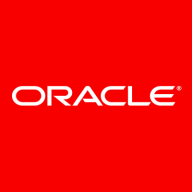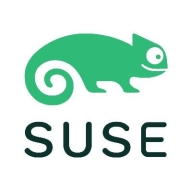

SUSE Linux Enterprise and Oracle Linux compete in the enterprise Linux distribution category. SUSE seems to have the upper hand in terms of adaptability, while Oracle Linux excels in environments focused on Oracle products.
Features: SUSE Linux Enterprise offers a broad spectrum of features for enterprise environments, including its YaST management tool, efficient memory usage, and strong integration with SAP HANA. Oracle Linux provides unique features like Ksplice for live kernel updates, the Unbreakable Enterprise Kernel, and compatibility with Oracle databases, making it ideal for Oracle-centric infrastructures.
Room for Improvement: SUSE Linux Enterprise could enhance its cloud integration, user interface, and response times for updates. Oracle Linux faces challenges in compatibility with non-Oracle packages, requires streamlined installation processes, and could improve third-party software integration to extend its utility beyond Oracle-specific workloads.
Ease of Deployment and Customer Service: SUSE Linux Enterprise is noted for ease of use across hybrid architectures with responsive support, making it suitable for varied deployment scenarios. Oracle Linux performs well in Oracle product environments, with adequate customer service, but users often rely on community forums due to mixed support experiences.
Pricing and ROI: SUSE Linux Enterprise is considered affordable with a simple licensing model, providing notable ROI in projects requiring SUSE expertise. Oracle Linux offers cost advantages with free availability and lower support costs, especially in Oracle-centric environments, but the appeal diminishes in non-Oracle-centric cases.
Everything from Oracle tools to applications is well integrated within Oracle Linux.
Our team is comfortable using Oracle Linux as it integrates well with Oracle tools, making everything work seamlessly.
In terms of outcomes or benefits I've seen over the last year, we have more than 30 servers, and we only need to reboot one server while all other servers continue working fine, resulting in very low downtime, which is very helpful.
I have seen a return on investment by switching our clusters from on-prem to Azure public cloud, using our same Bring Your Own Licenses, which saved costs on licensing.
Not all support engineers at Oracle are the same, so sometimes I experience good support that resolves issues quickly, while other times, it loops.
Oracle's technical support is excellent.
It is not as helpful or friendly as their application support.
SUSE Linux Enterprise provides a stable, secure, and well-supported platform for enterprise workloads, with powerful management tools and robust support for clustering, cloud, and containers.
The customer support is good; whenever we have opened a case, they have provided detailed explanations of the issues and resolutions.
I rate the customer service 10 out of 10 because SUSE has 24/7 availability support, extended support, security, multi-Linux distribution support, upgradation, and everything is user-friendly.
It handles device performance well, automatically managing any issues that arise.
Oracle should make the process faster, as we sometimes have to use a previous processor model to ensure compatibility.
New processor models sometimes lack immediate compatibility with Oracle Linux, requiring the use of previous models until support is available.
Its scalability is quite good since we are using Azure, which allows us to easily scale up or down our resources as needed.
SUSE Linux Enterprise is widely recognized for its strong scalability, making it suitable for organizations of all sizes, from small businesses to global enterprises.
Testing determines stability, as continuous Linux use and installations reveal more bugs.
Oracle Linux is very stable.
Our environment is locally deployed, and there are no performance issues or latency problems.
When HANA is utilized by many applications, I notice that while utilization does increase, we have never faced lagging or server unresponsiveness.
I would rate stability for SUSE Linux Enterprise an eight out of ten.
Having a user interface would make tasks easier, saving time by avoiding the need to remember command-line instructions.
There are significant limitations as we are not able to customize the system, and we are forced to use standard features which are not suitable for our business.
Oracle Linux's outage management can be improved to better handle outages.
Security is a top concern, and further strengthening default security policies, simplifying compliance management, and integrating advanced vulnerability management tools would be a valuable improvement.
The software manager was different, making it challenging to install certain applications.
The license we subscribed to should carry over within the same instance family.
While ERP might be expensive, Oracle Linux and KVMs are not on the higher side.
The cost of Microsoft OS is pretty high, and switching to Oracle Linux, which is free, reduced our costs by about 20% to 25%.
Oracle Linux is affordable.
Upgrading an instance results in overlapping or double subscription fees.
I would rate pricing for SUSE Linux Enterprise considering one is a high price and ten is a low price.
The licensing cost is a bit high.
Since it's from the same vendor as Oracle applications, it's easier to manage issues, making not just the solution cost-effective but also streamlined in management.
The updates are applied instantly once a CVE is identified, which makes it highly beneficial.
Oracle Linux provides fast updates, and the best aspect is that we can update our server without interrupting our service, which is very important for business continuity.
SUSE Linux had a clean user interface, which was a valuable feature for me.
It has a stable and reliable OS.
The LVM is very easy to configure, along with simple disk scanning compared to other systems.
| Product | Market Share (%) |
|---|---|
| Oracle Linux | 6.6% |
| SUSE Linux Enterprise | 5.8% |
| Other | 87.6% |

| Company Size | Count |
|---|---|
| Small Business | 44 |
| Midsize Enterprise | 17 |
| Large Enterprise | 72 |
| Company Size | Count |
|---|---|
| Small Business | 8 |
| Midsize Enterprise | 11 |
| Large Enterprise | 22 |
Oracle Linux is a stable, reliable, and scalable operating system primarily used for deploying and running Oracle databases. It is also suitable for various other functions, including managing operating systems and web servers, supporting traffic surveillance, and identity management.
Oracle Linux is highly valued for its stability, reliability, scalability, good technical support, and ease of use. It has helped organizations to achieve faster DNS queries, stable development environments, reduced vulnerability issues, good performance for Oracle applications, and improved ability to run test scenarios and parallel queries across massive databases.
Oracle Linux Features
Oracle Linux has many valuable key features. Some of the most useful ones include:
Oracle Linux Benefits
There are many benefits to implementing Oracle Linux. Some of the biggest advantages the solution offers include:
Reviews from Real Users
Oracle Linux stands out among its competitors for a number of reasons. Two major ones are its stability and scalability. PeerSpot users take note of the advantages of these features in their reviews:
One PeerSpot reviewer, an IT Manager, reports, “I find the virtualization the most valuable.” He adds, “Oracle Linux is the best Linux operating system that I have ever known. It is very stable and strong.”
An Enterprise Architect at a financial services firm writes of the solution, “You also don't have memory issues, especially when it is engineered with platforms like Exadata and Oracle Cluster. These give you the most throughput and performance.” He adds, “It is very scalable, especially on platforms like Oracle Cluster and Exadata.”
SUSE Linux Enterprise offers features like YaST for server management, seamless integration with Oracle and SAP, and a robust security setup. Renowned for stability, it efficiently supports workstations, SAP workloads, and cloud migrations across diverse industries.
SUSE Linux Enterprise is known for its lightweight design, high performance, and ease of installation. Its flexible architecture supports extensive documentation and efficient patching. The system uses the BTRFS file system for effective virtualization, and community support is significant. However, challenges include package updates causing conflicts, difficult initial setup and software management, high pricing, and support response times. Improvements in security compliance, cloud integration, hardware compatibility, and documentation are also needed.
What are SUSE Linux Enterprise's important features?
What benefits should users expect from using SUSE Linux Enterprise?
Industries like healthcare and banking use SUSE Linux Enterprise for secure transactions and structured application deployment. It is also a choice for organizations involved in testing, automation, and web development, offering support for SAP HANA integration and facilitating cloud migrations.
We monitor all Operating Systems (OS) for Business reviews to prevent fraudulent reviews and keep review quality high. We do not post reviews by company employees or direct competitors. We validate each review for authenticity via cross-reference with LinkedIn, and personal follow-up with the reviewer when necessary.